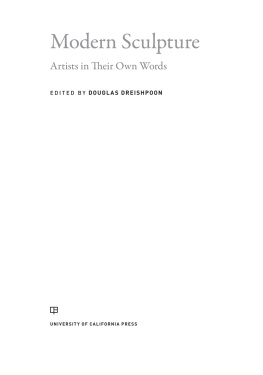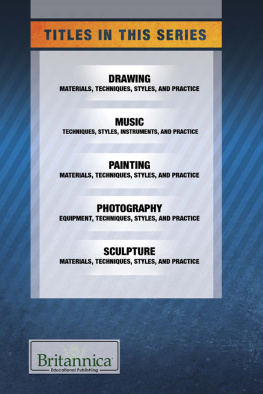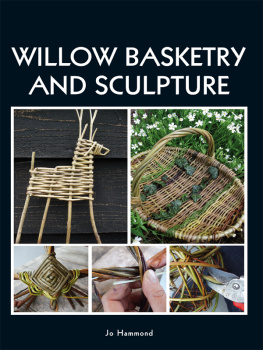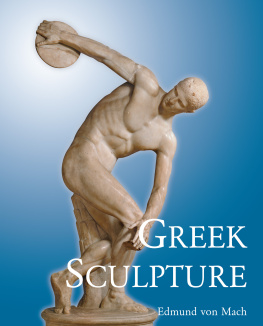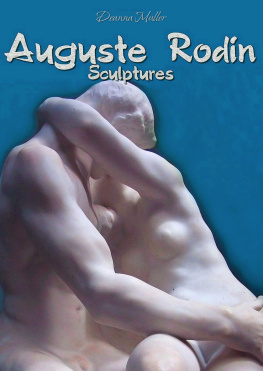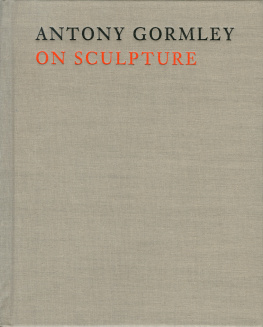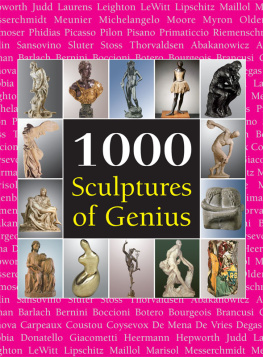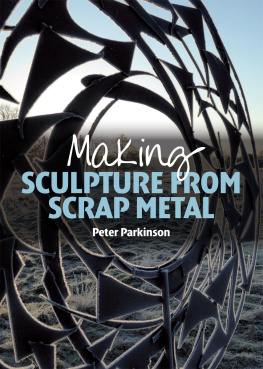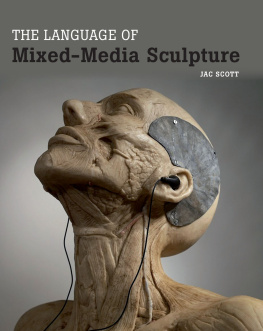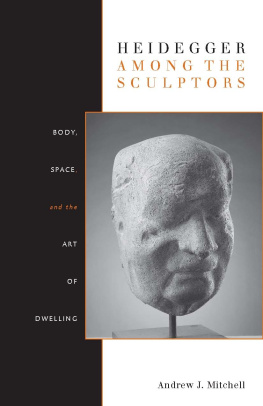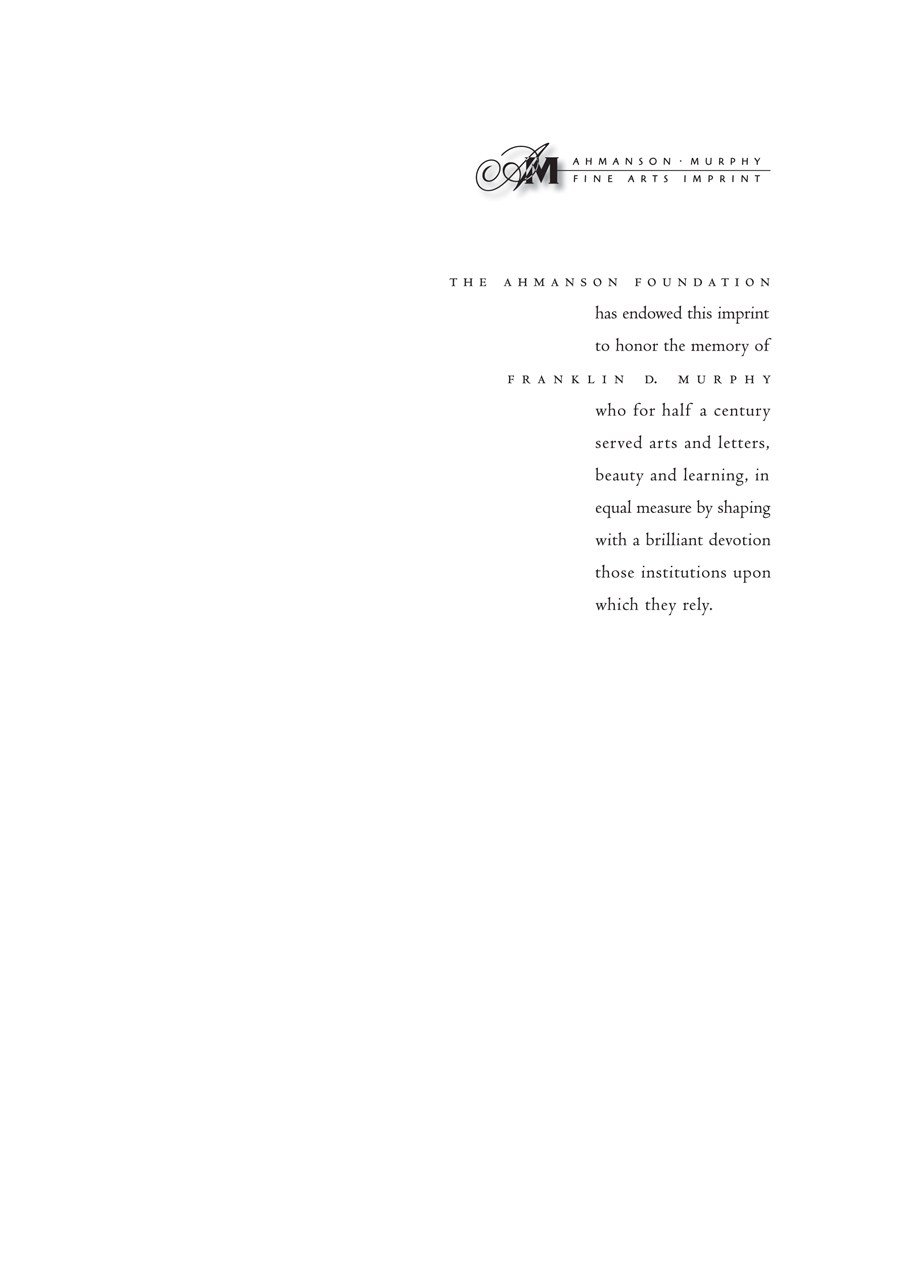of the Dedalus Foundation in making this book possible.
Cataloging-in-Publication Data is on file at the Library of Congress.
ISBN 978-0-520-29749-4 (pbk. : alk. paper)
Irving H. Dreishpoon, MD, and Georgene Simon Dreishpoon
PREFACE AND ACKNOWLEDGMENTS
How does one begin to visualize the trajectory of modern art? Alfred H. Barr Jr.s admittedly convoluted diagram illustrating Cubisms affinity to Impressionism, Neo-Impressionism, and Czanne, and its subsequent influence on Futurism, Suprematism, Constructivism, and de Stijl, is a good place to start. The graphic depiction of movements and isms, reproduced as the dust jacket for Cubism and Abstract Art , 1936, is by now well-known. Less known are his many variations of the flowchart, as he continually revised its configuration. Apparently, there was no easy way to finesse stylistic arrows signifying the progressive trends of modern minds. Sculpture occupies an honorable place in Barrs art constellation. Under his directorship at the Museum of Modern Art, experimental art (in its myriad manifestations) gained an institutional platform. In the thematic roundups that followed Cubism and Abstract Art , sculptors were recognized by sympathetic curators like Dorothy C. Miller, Andrew Carnduff Ritchie, William Seitz, and Peter Selz, whose timely exhibitions inform this books introduction.
Ad Reinhardts art cartoon, How to Look at Modern Art in America , like Barrs morphing illustration, had more than one version. Both encourage us to see the development of American modern art as a mutating family tree of sorts: a substantial trunk with shallow roots in shallow soil, banner-like leaves sprouting from ten-tacle-like branches, all bearing multiple names, descriptions, and quotations on plaques and weights suspended from chains and ropes. The abstract painter, known as the Black Monk for his seemingly hermetic but deceptively nuanced monochromatic canvases, took no prisoners when it came to the intersection of art and society: every kind of artist (representational as well as abstract), art movement, exhibition, institution, and transaction was suspect. His first tree, from 1946, sags under ideological tagsSUBJECT MATTER, BUSINESS AS ART PATRON, REGION-ALISM/ILLUSTRATIONthat threaten to bring it down. Fifteen years on, many of the branches that suppor ted abstractionists have disappeared. What remains (a mlange of Abstract Expressionists, American Scene painters, and illustrators) teeters on the verge of collapse.
Only the names of a few would-be sculptorsArp, Duchamp, Picasso, Matisseappear on the first trees trunk, whose painter-emblazoned roots appear to be nourished by an infusion of Negro Sculpture. One gets the impression that Reinhardt wasnt a big fan of sculpture, at least not of three-dimensional objects that competed with two-dimensional paintings in the limited space of most New York galleries south of Fourteenth Street. His by now infamous definition of sculpture, as something you bump into when you back up to look at a painting, naturally infuriated some of his peers, probably because it exposed, with irreverent humor, the vulnerability of modern sculpture as a vagabond object lacking a stable site.
There may have been museum directors, curators, critics, and art dealers cruising the tributaries of Lipchitzs expansive stream rounding up prospects and making provisional judgments, but what mattered, more than fleeting flurries of fame and fortune, was the art and the artists who made it.
Modern Sculpture: Artists in Their Own Words defers to Lipchitzs descriptive archetype. In this sourcebook, sculptors rise as central protagonists; their words illuminate the work. Artists have their own, admittedly idiosyncratic, reasons for doing what they do. Most approach the history of art as an open book, akin to Andr Malrauxs muse imaginaire, a reservoir of formal possibilities. Curators and critics, in their role as intermediaries, are indispensable as gatekeepers and ideational trendsetters. But in the final analysis, most artists measure themselves against the work of their peers, past and present: rejecting and accepting, negating and assimilating according to their own imaginations. As an artist you measure yourself against other artists, Richard Serra wrote in a tribute to Donald Judd. As you grow older, you measure yourself against the people you have known who have died. Ursula von Rydingsvard expressed a similar sentiment by way of describing why she makes art:
Because my deepest admiration goes to those who have made art that has interested me.
Because I want attention from those who make good art.
The perpetual undercurrent of Lipchitzs Great Stream, as documented in this anthology, is decidedly artist-centric.
The books structure is intended to consolidate kindred sculptors in chronological sequences according to descriptive categories that characterize specific periods. Thematic parameters are inherently porous. Mine are no exception; numerous individualsJoseph Beuys, Christo and Jeanne-Claude, Lygia Clark, Marcel Duchamp, Hans Haacke, Allan Kaprow, Frederick Kiesler, Maya Lin, Ana Mendieta, Robert Morris, Bruce Nauman, Hlio Oiticica, Nam June Paik, Giuseppe Penone, Felix Gonzalez-Torres, and Mierle Laderman Ukelesstraddle more than one category. The books content was compiled and vetted over the course of five years. Many of the selected texts appear in previous anthologies.here for the first time. As artists evolve, so, too, do their ideas and methods. Privileging a single statement is like asking someone to stand still as lifes race continues. Each text reflects a sculptors aesthetic disposition at a particular moment, as does the books art program, which features timely photographs of artists studios. Ellipses appear in the original texts, unless enclosed in brackets; unless otherwise indicated, emphasis (such as italics or underlining) is in the original.

